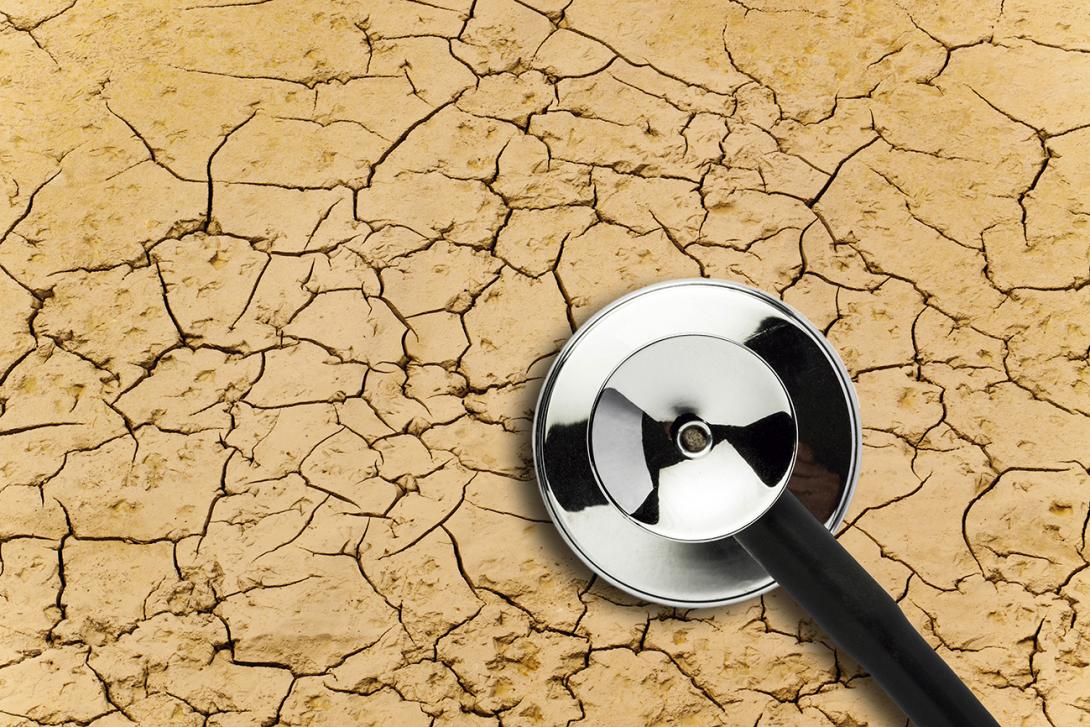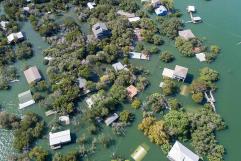
Climate change and its effects on health
The climate emergency has some important direct consequences on people’s health. There are many diseases that get worse every year and new ones appear that result in important economic and public health problems. The warning is real.
Climate change kills. All the experts agree that climate variations due to human actions have repercussions on people’s health. Natural disasters such as heat waves, floods and droughts, cause deaths and diseases, both directly and indirectly. Additionally, many important diseases are very sensitive to changes in temperature and rainfall, such as malaria and dengue fever. Other causes of death such as malnutrition and diarrhoea will increase in the future due to the climate change, according to the most recent report by the United Nations Intergovernmental Panel on Climate Change (IPCC). And the fact is that it has been calculated that climate change caused 150,000 deaths all over the world in the year 2000, and according to a new study by the WHO, this figure will rise to 250,000 deaths in 2040.It has been calculated that climate change caused 150,000 deaths all over the world in the year 2000, and according to the WHO predictions this figure will rise to 250,000 deaths in 2040
The climate emergency is not just an environmental phenomenon, but rather it results in important economic and public health consequences. Therefore, the international community has been working on its effects on health since 2008, when, at the 61st World Assembly of the World Health Organisation (WHO), 193 countries assumed the urgency for developing health measures integrated in the climate change adaptation plans. In March 2021, the European Commission (EC), collaborating with the European Environmental Agency also started up the new European Observatory on Climate and Health, an extension of the European Climate Adaptation Platform (Climate-ADAPT), to “understand, anticipate and minimise the threats to health caused by climate change.” “There is no vaccine against the climate crisis,” the executive vice-chairman for the European Green Compact, Frans Timmermans stated at that time, “but we can still fight it and get ready for its unavoidable effects, which are already being perceived both inside and outside the European Union.” Because climate change is a global threat that compromises air quality, the amount of drinking water and food available and the possibility of having a safe home.
Circulatory and respiratory diseases
The variability of the climate is the direct or indirect cause of deaths and diseases. Amongst the former are those caused by floods, tornados or hurricanes (the increase in natural disasters on a global scale has tripled since the 1960s and every year they cause around 60,000 deaths), but also due to heat waves such as the one suffered in Europe in the summer of 2003, when an excess mortality rate of 70,000 deaths was recorded, according to the World Health Organisation. Another direct cause is the worsening of circulatory and respiratory diseases, since extreme heat also means a rise in the levels of pollen and other allergens, which cause asthma, a disease that affects around 300 million people around the world and that will increase over the next few years. These heat waves will escalate, particularly in Southern Europe, according to the experts from the IPCC.
The cold will also affect health. This is the case of the wave that devastated the medium latitudes of the European continent in 2018, known as the Beast from the East. This year we have once again seen snow and ice on blossoming fruit trees at the start of a spring that has changed in many European regions. One of the possible causes is the loss of the sea ice in the Barents Sea in the Arctic, according to a study by the University of Oulu (Finland) and the Arctic University of Norway, published in the magazine Nature Geoscience. According to the experts, over the past four decades, a growing loss of ice in the Barents Sea has been observed, with an associated effect of spring snowfall and cold in continental Europe, which affects the harvests. The same researchers discovered that during the 2018 episode, the conditions on the open sea in the Barents Sea supplied up to 88% of the snow that fell on Europe.
An increase in the risk of malnutrition
Amongst the indirect consequences on health by climate change are a greater cardiopulmonary mortality due to the presence of particles in the air – cause by industrial and traffic pollution and the high atmospheric concentration of highly toxic ozone. Disorders caused by food and water, such as diarrhoea may also increase, along with an increase in the risk of malnutrition due to the drop in food production. “Climate change is not only a bill that will have to be paid by the future generations, but rather it is already being paid now through people’s health”, Tedros Adhanom Ghebreyesus, General Director of the World Health Organisation affirms. “It is a moral imperative for the countries that have the necessary resources to fight against climate change and safeguard both current and future health,” he adds. For this reason, most countries are giving an increasing priority to climate change and health, although “only 38% of those surveyed have the financial resources to implement, although only partially, their national strategy and less than 10% apportion sufficient resources for their full implementation” sources from the WHO indicate. The same organism affirms that ·the fulfilment of the goals of the Paris Agreement regarding the reduction of atmospheric pollution alone could save almost one million lives a year all over the world from here to 2050.”




